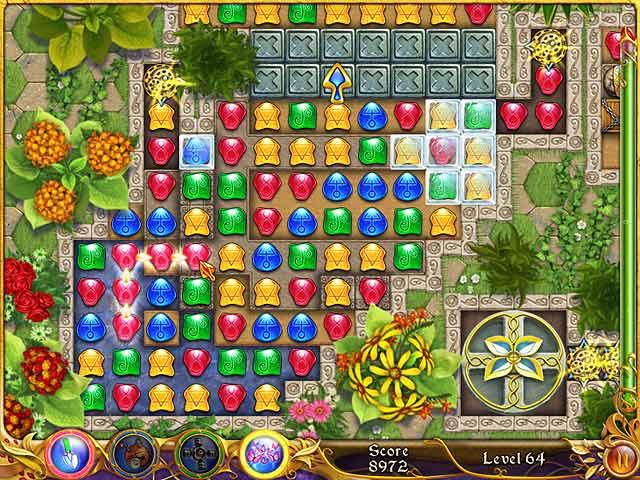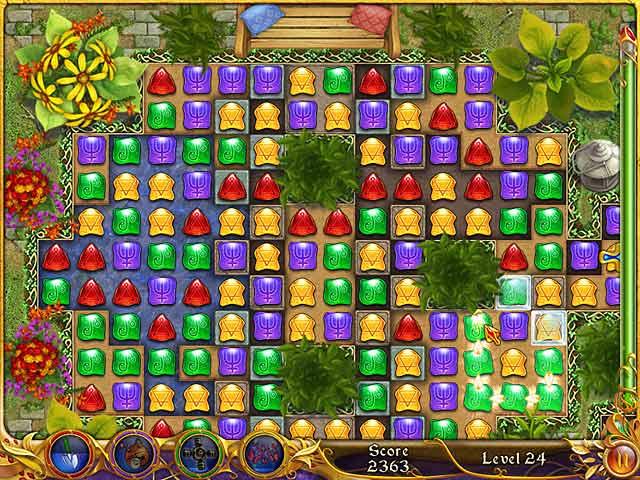- Wondering how to get Monopoly GO! free rolls? Well, you’ve come to the right place. In this guide, we provide you with a bunch of tips and tricks to get some free rolls for the hit new mobile game. We’ll …
Best Roblox Horror Games to Play Right Now – Updated Weekly
By Adele Wilson
Our Best Roblox Horror Games guide features the scariest and most creative experiences to play right now on the platform!The BEST Roblox Games of The Week – Games You Need To Play!
By Sho Roberts
Our feature shares our pick for the Best Roblox Games of the week! With our feature, we guarantee you'll find something new to play!Type Soul Clan Rarity Guide – All Legendary And Common Clans Listed!
By Nathan Ball
Wondering what your odds of rolling a particular Clan are? Wonder no more, with my handy Type Soul Clan Rarity guide.
Hello Venice Review
While the match three genre has never been at a loss for new games, it’s a pretty safe bet that most new games will be fairly mindless, asking you to simply make matches of three or more like gems as quickly as possible, with little concentration or effort on/for a greater goal. With Hello Venice however, you have a game that plays with far more strategy (and therefore lasting entertainment) than most others.

After playing Hello Venice, you won’t want to say goodbye to the match 3 genre
While the match three genre has never been at a loss for new games, it’s a pretty safe bet that most new games will be fairly mindless, asking you to simply make matches of three or more like gems as quickly as possible, with little concentration or effort on/for a greater goal. With Hello Venice however, you have a game that plays with far more strategy (and therefore lasting entertainment) than most others.
Hello Venice places you in the role of a young brother and sister, decedents of an alchemist’s family from Venice who were famous for their manor’s massive, lush gardens. As time passed the garden fell into neglect, taking your family’s reputation down with it. Off to Venice you’ll go then, to help repair this tired garden and earn back the respect your family deserves.

For the majority of Hello Venice‘s 75 levels, you’ll be asked to move water from underground wells to fountains around the garden by destroying groups of three or more like gems from massive game boards. The water starts in one particular corner of a board, and by matching gems you’ll destroy cement or rubble barriers that block the water’s path to the fountain. The board designs themselves are something to behold, as they’re setup like a maze. You likely won’t stay in one section of the board for too long, as the water turns corners and spreads throughout the garden in each individual level.
Rather than asking you to swap gems to create matches, Hello Venice instead asks you to simply click and drag your mouse over matching gems until you’ve highlighted at least three. If you can make a match of six or more at once, you’ll cause an explosion (in the direction you were last dragging your mouse) that can clear out whole sections of the board at once (graphically, the game handles these incredibly well, as the water animates with ripples and waves as it’s being moved). While this might be great in later levels, as you’ll need to use explosions to clear otherwise immovable stones from the board, it can also impact your ability to earn extra money in each level, as plants need to be irrigated along the way. This plant irrigation is a voluntary process, but if you can make the water touch the outside edges of the board, the flowers will bloom and give you more money in the process.
Once you’ve connected the water to the fountain, you’ll be given a score that relates to a specific amount of money, with any time remaining (if you choose to play while being timed) resulting in a cash bonus. You’ll use your money to purchase upgrades and flowers for your overall garden. The graphics in these sections are fairly blurry, even though the colors are still quite vibrant, which is disappointing. Still, you’ll have three options for each individual upgrade, with different options costing more than others. You can choose whichever option you’d like, as you can always play through another level to earn more money if the choice you’d like is still out of reach.

Bringing in a touch of alchemy, after Level 10 you’ll have a chance of finding magical treasure chests or machines on each game board. Touching these with water either reveals their contents (in the case of the treasure chests) or causes explosions that can tear through the ice blocks, massive stones or chain-locked boxes that fill up certain sections of these boards. If you do happen to get stuck along the way, say by a stone that you can’t cause an explosion to clear due to the layout of the board’s surrounding gems, you can use multiple power-ups that charge by making matches of specific colors of gems over time. One power-up might allow you to clear a whole row or column from the board, while another is a time bomb that removes a large group of gems in the shape of a diamond.
One final gameplay mode is the Garden-Growing time management mini-game that sees you being hired by the neighbors to earn some extra cash. This mode challenges you to repair fountains by simply selling flowers to earn money. Flowers constantly grow on the plants already in the garden, but you can purchase and plant additional seeds, water dying flowers and remove rubble from the gardens to earn more money, all while still being timed.
Needless to say, Hello Venice has a lot going on in a deceptively small package. While most of the individual gameplay elements can be found separately in other games, the incredibly entertaining combination of all of the above is a testament to the fact that the match three genre still has plenty of life to live, and I, for one, am incredibly thankful for that.

The good

The bad
More articles...
Monopoly GO! Free Rolls – Links For Free Dice
By Glen Fox
Wondering how to get Monopoly GO! free rolls? Well, you’ve come to the right place. In this guide, we provide you with a bunch of tips and tricks to get some free rolls for the hit new mobile game. We’ll …Best Roblox Horror Games to Play Right Now – Updated Weekly
By Adele Wilson
Our Best Roblox Horror Games guide features the scariest and most creative experiences to play right now on the platform!The BEST Roblox Games of The Week – Games You Need To Play!
By Sho Roberts
Our feature shares our pick for the Best Roblox Games of the week! With our feature, we guarantee you'll find something new to play!Type Soul Clan Rarity Guide – All Legendary And Common Clans Listed!
By Nathan Ball
Wondering what your odds of rolling a particular Clan are? Wonder no more, with my handy Type Soul Clan Rarity guide.







